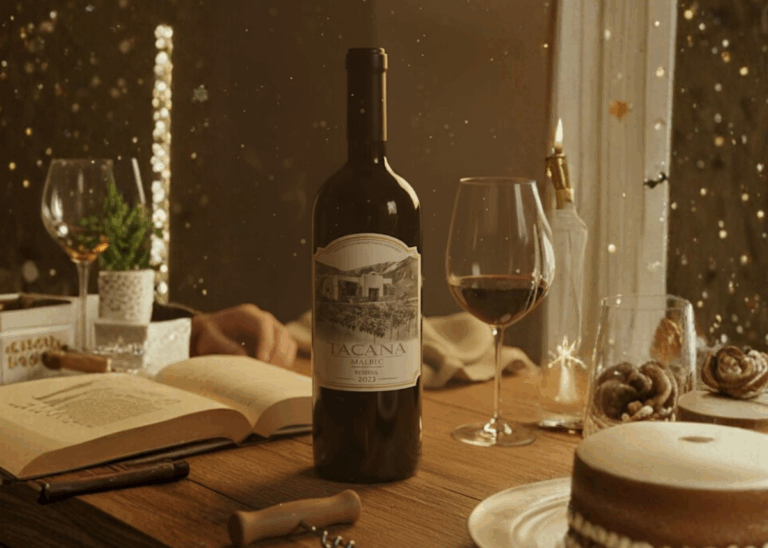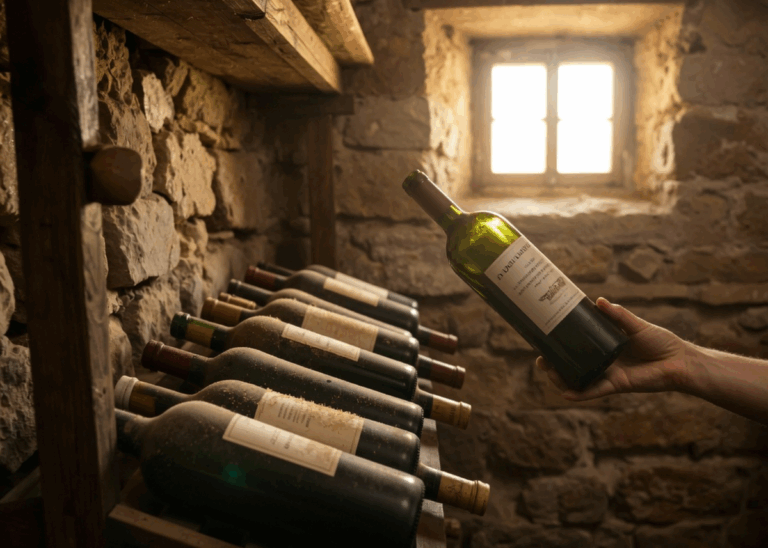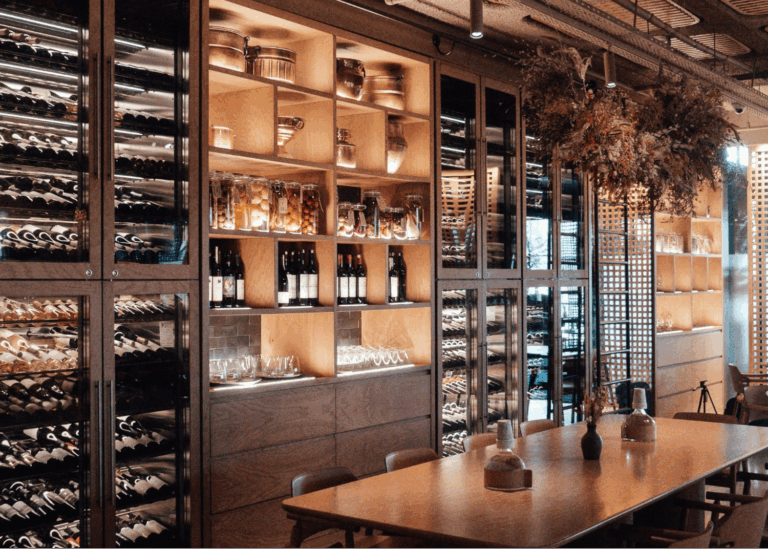[et_pb_section fb_built=”1″ _builder_version=”4.11.1″ _module_preset=”default” global_colors_info=”{}”][et_pb_row _builder_version=”4.11.1″ _module_preset=”default” global_colors_info=”{}”][et_pb_column type=”4_4″ _builder_version=”4.11.1″ _module_preset=”default” global_colors_info=”{}”][et_pb_text _builder_version=”4.11.1″ _module_preset=”default” global_colors_info=”{}”]
Old school Tuscans sometimes call “Super Tuscan” wines vini californiani.
The implication is that they aren’t so much Italian wines as Californian wannabes.
There’s truth in the slight. Yes, Italian winemakers had been using Bordeaux varietals for private consumption long before the craze of the 80s and 90s. But it is no coincidence that the Super Tuscan style exploded in close succession to Northern California’s ascent.
That said, like so many spaghetti westerns, the counterfeit does, on occasion, surpass the original.
Today, we continue the story of the super Tuscans – the table wine rebels who came to dominate Italy and the greater world several decades ago.
But are they still relevant in 2023?
More on that in a moment. But first… Is “hand-harvested” wine really better?
This week Julien Miquel explains hand vs. machine harvesting… From the legitimate benefits of hand-harvesting grapes… To the times machine harvesting is essential to create a quality wine…
[/et_pb_text][et_pb_video src=”https://youtu.be/S0bfkhWBKaM” module_id=”video” _builder_version=”4.11.1″ _module_preset=”default” width=”76%” width_tablet=”83%” width_phone=”100%” width_last_edited=”on|phone” module_alignment=”center” global_colors_info=”{}”][/et_pb_video][et_pb_text _builder_version=”4.11.1″ _module_preset=”default” global_colors_info=”{}”]
Vini Californiani (Continued)
As we covered last time, super Tuscans are Tuscan wines made outside (and in response to) the strictures of the local denominaziones (Italian appellations).
In the mid 20th century, Chianti was having an identity crisis. Loose standards allowed for a glut of the stuff when Chianti became hip in the 1960s and quality declined accordingly making the brand synonymous with weak, overly acidic wine. At the same time, tastes were changing – from quaffable wines to big Bordeaux blends or single varietals, made in the California style and championed by critics such as Robert Parker. Tuscan winemakers, meanwhile, were still bound by regulations that barred them from using French grapes, requiring that they stick to a centuries old recipe, which mixed sangiovese with white grape juice.
And then came two landmark wines – Sassicaia and Tignanello, both released in 1971 and both made using forbidden French grapes.
As such, both were initially classified as vina da tavola, or table wines, unable to bear the name Chianti or Tuscany.
Those early vintages would, in time, become some of the most expensive “table wines” ever made.
Sassicaia and Tignanello showed other Tuscan winemakers, fascinated with the 1970s California scene, that big reds were not beyond their reach so long as they dared forego the Tuscan brand. Vineyards of cabernet sauvignon, merlot, and cabernet franc sprang up on the sheer Tuscan hills.
It took about ten years for word to get out. The British wine magazine Decanter, newly founded in 1975, deserves the lion’s share of the credit for breaking the story to non-Italian audiences, especially after a blind tasting in which a selection of Tuscan iconoclasts bested a selection of famed Bordeaux vintages in victory that echoed the 1976 triumph of California over France in the Judgement of Paris.
By the mid 80s, the American consumer had begun to talk about “Super Tuscans,” a name coined by wine writer and Master of Wine Nicolas Belfrage (the “super” refers to the superior quality in comparison to much Tuscan wine at the time). The French vines planted in the late 70s and early 80s were old enough for production, leading to new entrants in the Super Tuscan style such as Ornellaia, from the winemakers of Tignanello who, upon seeing the success of Sassicaia in the village of Bolgheri, planted vines on a neighboring plot in 1981 and began production in 1985.
[/et_pb_text][et_pb_text _builder_version=”4.11.1″ _module_preset=”default” background_color=”#d4d4d4″ width=”50%” width_tablet=”80%” width_phone=”100%” width_last_edited=”on|desktop” module_alignment=”center” custom_padding=”20px|20px|20px|20px|true|true” global_colors_info=”{}”]
How to Spot a Super Tuscan
The label: At their advent, Super Tuscans bore a simple vina da tavola marker on their label. From 1992 onwards that changed to “Tuscana IGT.” Nowadays, smaller sub-zones have begun to form their own DOCs or DOCGs (appellations) such as Cortona DOC or Bolgheri DOC (Sassicaia and Ornellaia are both under the latter).
The grape: Look for a Bordeaux grape – usually merlot, cabernet sauvignon, or, less commonly, cabernet franc.
The taste: Black fruit? That’s likely merlot and a dead giveaway (there’s seldom black fruit in sangiovese). Big ol’ body? Probably due to cab sauv (sangio on its own is leaner). Spicy? Could be cab franc in there.
[/et_pb_text][et_pb_text _builder_version=”4.11.1″ _module_preset=”default” hover_enabled=”0″ global_colors_info=”{}” sticky_enabled=”0″]
In 1984, Chianti producers and regulators, fearing total eclipse by the waxing popularity of their upstart brethren, got their act together and formed the current Chianti DOCG, a sort of premium appellation in which the wine itself is “guaranteed” by a panel that evaluates each wine right down to its chemical composition.
But the upstarts wanted a legitimacy of their own. In 1992, regulators created the Toscana IGT, a broad label but a label nonetheless. Bolgheri got its own DOC later in 1995, codifying the once freewheeling Super Tuscan formula into a strict set of rules. And so eventually the rebels become the establishment.
Since the wave peaked in the early 2000s, general opinion on the Super Tuscan style has become more mixed. As happened to Chianti 50 years earlier, the style’s popularity created a flood of new Super Tuscans onto the market, some better than others.
Detractors wonder aloud why Italians should be chasing the “big red” style (the “vini californiani”) rather than focusing on making great wines that are uniquely Italian.
But that’s misunderstanding the Super Tuscan in our view. The Italian style has always been less about the grape and more about the terroir. Adding a dash of 10% cab sauv to a sangiovese wine is like adding a resonator to a guitar – it allows the drinker to get overtones of terroir that might not appear in a single varietal wine.
And the terroir is really what continues to make the style interesting in our view. The Super Tuscan of today is no longer either a pricey Bolgheri or an IGT of indeterminate origin. Nor is it even necessarily a Tuscan.
The clay soils of Cortona, for example, a small town outside of Montepulciano (home to Tuscany’s other DOCG, Vino Nobile di Montepulciano) that was once a major center of the Etruscan civilization and later a winemaking hub with fans that included Pliny the Younger and Pope Paul III, are now rising anew with chocolatey gunpowder merlots under the Cortona DOC. (Partnership members will sample a 2018 from the Leuta winery in their upcoming Italian Collection).
Meanwhile southeast of Tuscany, in the Umbria region, where the marine influence fades and the hilly landscape softens, the locals are subverting the region’s flagship style (a dry white called Orvieto) with reds of every possible varietal. The cabernet and merlot there, grown on green, volcanic slopes around Perugia, pair exceptionally well with cold cuts.
Finally, there’s Marche. The typical map of wine regions on Italy’s Adriatic coast highlights Emilia Romagna, then jumps south to Abruzzi, leaving a big blank spot between them. That’s Marche. It’s the lost world of Italian winemaking. Accordingly, winemakers there go about their business much as they always have – by hand, using the montepulciano grape (not to be confused with the eponymous DOCG, which uses the sangiovese grape). Montepulciano tends to be ultra-dry with an average body. Much as the Tuscans of 50 years ago sought new dimensions in their sangiovese by adding merlot and cab sauv, the winemakers of Marche are doing the same with their montepulciano. Of all the newer “Super” styles, Marche is perhaps the most interesting. It is a place locked into a very old tradition, ready to be born anew.
Until next time,
The Wine Explorer
[/et_pb_text][/et_pb_column][/et_pb_row][/et_pb_section]



